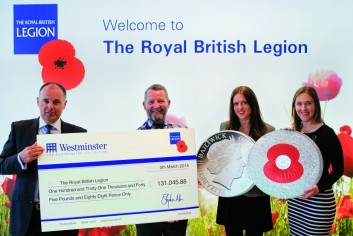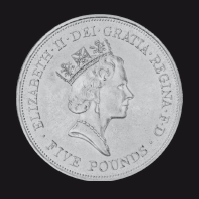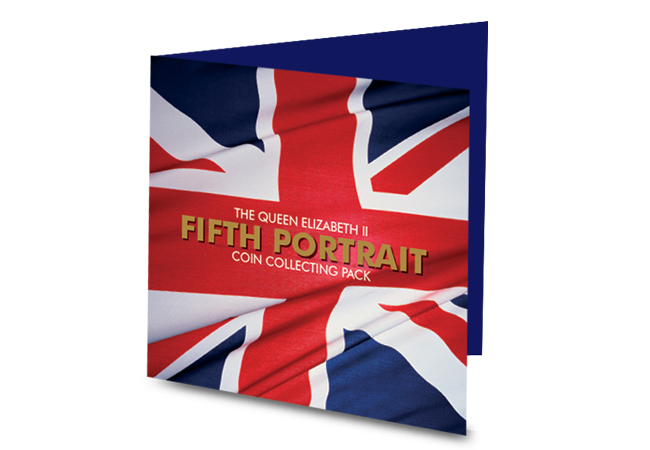Posts by Ian Glen
Why the Queen & Prince Philip are literally 1 in a million (and Google doesn’t even know the answer)…
Google has the answer to everything. Well actually not quite everything, it seems…

Her Majesty the Queen and HRH The Duke of Edinburgh at their Wedding in 1947
That’s because when I sat down to write this blog about the Queen and Prince Philip’s Platinum Wedding Anniversary in November this year, I thought it would be interesting to see how many couples actually celebrate 70 years of marriage.
The answer is Google doesn’t know.
And the more I dug around, the more I realised the reason why. It’s incredibly rare.
So if Google can’t tell us, let’s see if we can come up with an answer.
Fundamental to the problem is that there is simply no central record of how long marriages last until one of the couple passes away. But perhaps we can make some assumptions based on some of the statistics that the Office for National Statistics (ONS) do publish.
How likely are two people to both make it past their 90th Birthday?
In 1947 the median age for marriage was 23.7 for men and 20.5 for women[i], making Princess Elizabeth and Lieutenant Philip Mountbatten pretty typical of their generation, marrying aged 21 and 26. It also means it’s fair to work on the basis that for nearly any couple celebrating their Platinum Wedding Anniversary, they are both going to be in their nineties.
So the chances for making it past the age of 90 in England and Wales is 0.8%[ii]. That means that the chances of two people BOTH making it is:
0.008 x 0.008 = 0.000064
0.0064% chance of two people both making it past their 90th birthday.
How many people were married in 1947?
Fortunately, it is much easier to uncover how many people married in 1947. In fact 1947 is the very first year that the ONS not only holds data for the total number of marriages in England and Wales but also in which month they took place.[iii]
Certainly by choosing November, they were not following the trend. In fact with fewer than 30,000 marriages that month, it was the third least popular month for weddings that year.
Overall, the young princess and her naval officer beau were one of 401,210 couples to tie the knot that year. Statistics for Scotland and Northern Ireland appear more difficult to track down but it would be reasonable to extrapolate the numbers based on the overall UK population split, which suggests a figure for the whole of the UK.
466,000 UK marriages in 1947.
But what about divorces?
Data is not easily available for 1947 but it can be found for English and Welsh marriages in 1950[iv]. According to the ONS, 8.6% of marriages at that time ended in divorce, so we should discount them out from our 466,000 UK marriages.
466,000 x 91.4% = 426,000 non-divorce marriages in 1947.
How many Platinum Wedding Anniversaries might we expect this year?
So we have now have two critical pieces of data. The chances of two people making it past the age of 90 – the realistic milestone age to celebrate a Platinum Wedding Anniversary – and the number of marriages in 1947 that did not end in divorce.
Based on that we can multiply the two numbers together to give us a pretty reasonable estimate of the number of couples who will celebrate 70 years of marriage this year.
426,000 x 0.0064% = 27 Platinum Wedding Anniversaries
So, although there are no official statistics to back it up, it seems likely that only around 30 couples will join the Queen and Prince Philip in celebrating their Platinum Wedding Anniversary this year. Or to put it another way – just 60 people in the UK will mark 70 years of marriage in 2017 – that’s 1 in a million.
That’s why for me, forget the Jubilees; forget the birthdays. For the Queen and Prince Philip their Platinum Wedding Anniversary is the pinnacle of their long list of incredible milestones. And we, the British people, must join them in marking this historic moment.
[i] www.census.gov
[ii] www.theguardian.com
[iii] www.ons.gov.uk
[iv] www.ons.gov.uk
How the Poppy Coin has raised over £450,000 for The Royal British Legion
As the distributor of the annual Poppy Coin we are proud to continue supporting The Royal British Legion each year.
The coins, which have often included colour or gold-plated elements, are some of the most innovative pieces struck for collectors over the last 6 years.
Yet owning a Poppy Coin means much more than simply collecting the latest interesting or historic commemorative coin.
Each coin owned by you has resulted in a donation to the work of The Royal British Legion providing financial, social and emotional support to all who have served and are currently serving in the British Armed Forces and their families.
Last year we were delighted to raise a record amount of over £130,000 with the special First World War Centenary “100 Poppies” coin. And with over £450,000 raised for the RBL to date, we hope to break the £500,000 mark this year for total donations.
Louise Ajdukiewicz, Head of Corporate Partnerships at The Royal British Legion, says “These funds make a real difference to the charity and help us to continue our vital services supporting the whole Armed Forces community.”
But does owning a Poppy Coin provide an alternative to wearing a Poppy or donating directly to The Royal British Legion? Of course not.
I’ll be making my annual donation to The Royal British Legion and wearing my Poppy with pride this year. But I have also bought a silver Poppy Coin for each of my children in the knowledge that they will have a valuable reminder of the sacrifices of the First World War.
Own the new Remembrance Day £5 Poppy Coin for just £5 today
New Poppy coins are made available during the Remembrance period from October each year and this year’s design will be a ‘numismatic ‘first’. The 2015 coin features a poppy wreath encircling the famous quote, ‘Lest we forget’ – the first time that a wreath design has been used on a poppy coin.
Click here to secure your coin for just £5 (postfree) – with a donation going directly to the Legion’s work.
Some examples of how The Royal British Legion supports the Armed Services community:
Care Homes – The Legion has six care homes to provide short and long term care for serving and ex-Service people and their dependants. Situated around the country, they offer a wide range of services including four with specialist dementia care. Care home communities include men and women of varied ages and abilities, and because these homes are exclusive to ex-Service people and their dependants, there is a unique camaraderie.
Break Centres – they offer much-needed breaks to ex-Service and serving personnel and their families, who may be recovering from an illness, bereavement or other life-affecting event. The Legion have four Break Centres located in prime locations around the country.
Handy Van Service – they provide essential and critical support to ex-service people who are unable to carry out household repairs or small jobs, helping them to remain independent in their own homes. The team of trusted handy people are also fully trained caseworkers enabling them to look out for other issues and people at risk in order to flag to the wider welfare team.
Benefits and Money Advice – they offer a confidential, face-to-face Benefits and Money Advice Service to help people manage their finances, including assisting them with making claims for state benefits and also dealing with money problems including debt.
Civvy Street – This service provides a range of information and advice on resettlement, learning and work. Civvy Street is designed to assist in-Service families, armed forces leavers and the veterans’ community adjust to civilian life and kick-start a new career.
Portraits of a Queen – which is Britain’s favourite?
With the new portrait of Queen Elizabeth II due to be revealed on Monday, I thought I’d revisit a blog I posted in 2013, which saw the 60th anniversary of the Queen on our coinage.
Back then you voted Mary Gillick’s 1953 portrait of the Queen the best, by a very slim margin. Will the new portrait become the nation’s favourite? Let’s take a look at the previous designs…
The first Queen Elizabeth II coins were struck in 1953 and since then four different effigies adorned our coins.
1953 – 1967: Mary Gillick
The first coins of Queen Elizabeth’s reign bore Mary Gillick’s portrait of the young Queen, engraved especially for the new coins.
Her uncrowned portrait of the Queen is still used on the Maundy Money distributed each year by Her Majesty.
With the upcoming decimilisation, it was decided to refresh the Queen’s portrait with Arnold Machin’s new sculpture of the Queen. Commissioned in 1964, it first appeared in 1968 on the new 5p and 10p coins. A version of the design with tiara was also introduced on stamps in 1967 and remains to this day.
1985 – 1997: Raphael Maklouf
In creating his new effigy of Her Majesty, Raphael Maklouf aimed “to create a symbol, regal and ageless”.
His “couped” portrait depicts Queen Elizabeth II wearing the royal diadem favoured by her on the way to and from the State Opening of Parliament.

The current Queen’s head on our coinage was designed in 1997 by Ian Rank-Broadley. Created to fill the full circle of the coin, its larger size was a deliberate response to the smaller 5p and 10p coins in circulation. A noticeably more mature portrayal of Her Majesty, Rank-Broadley aimed to show the Queen with “poise and bearing”.
If you’re interested…
Collect all 8 of the ‘new portrait’ coins when you find them in your change with The Queen’s New Portrait Coin Collecting Pack. Available now for just £3.99 (+p&p).









